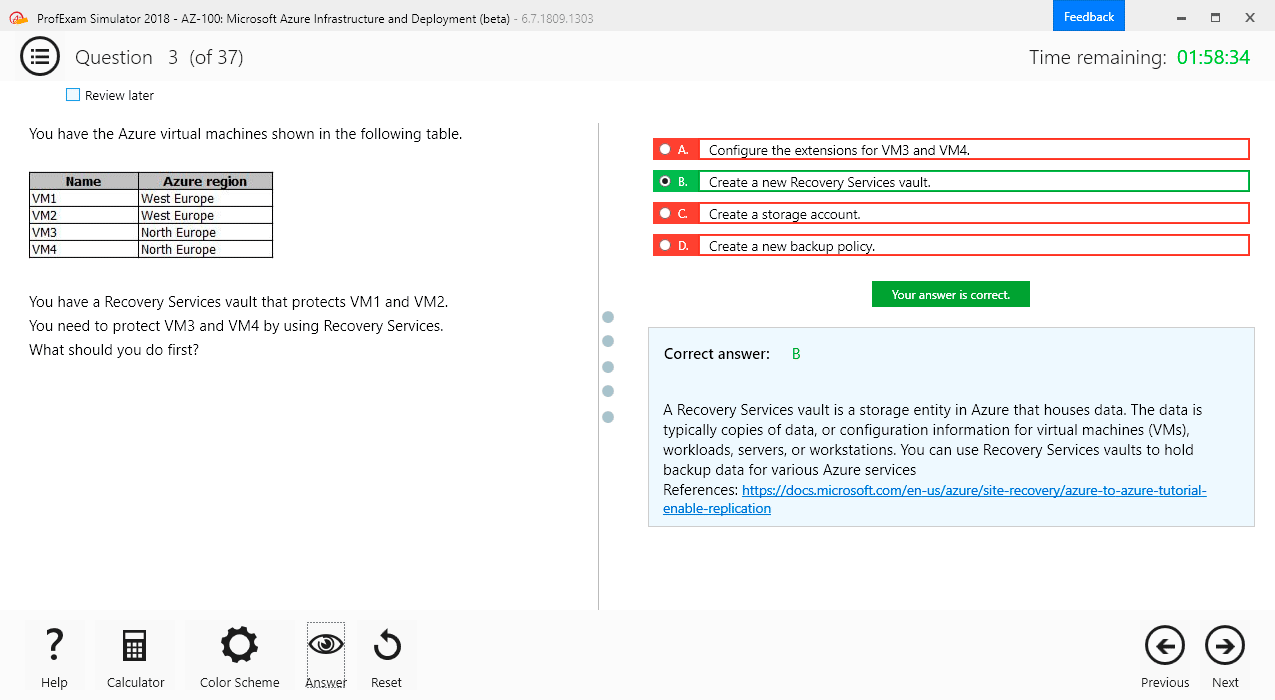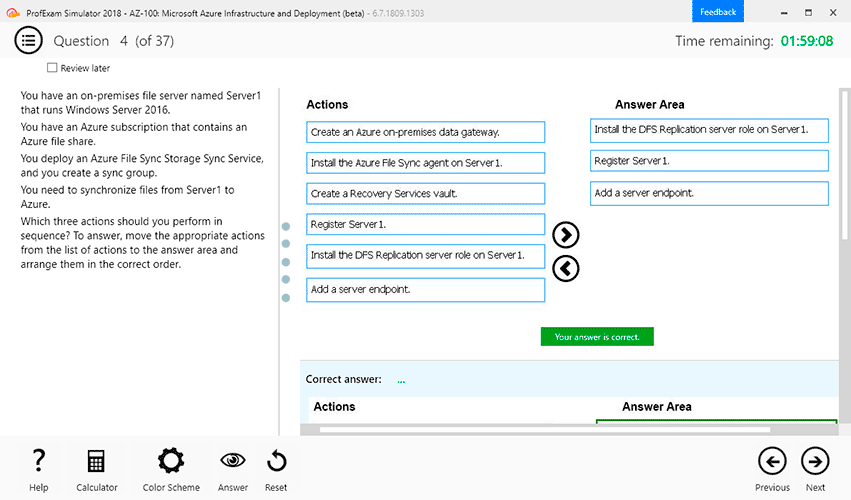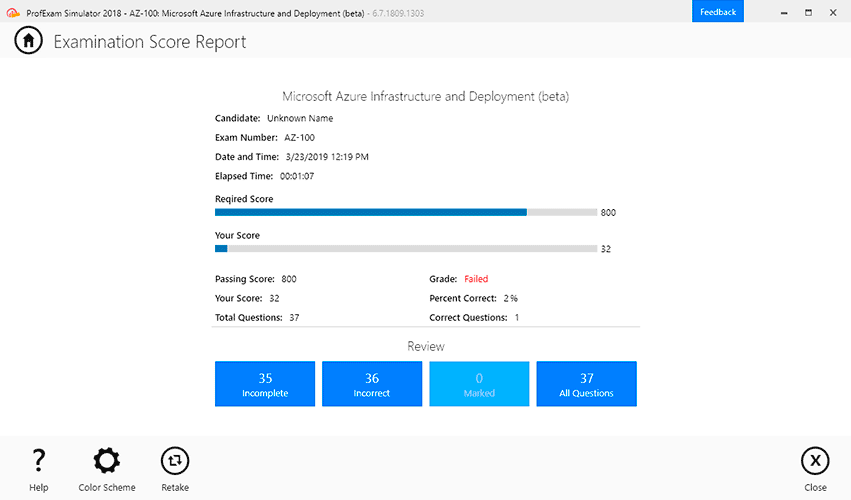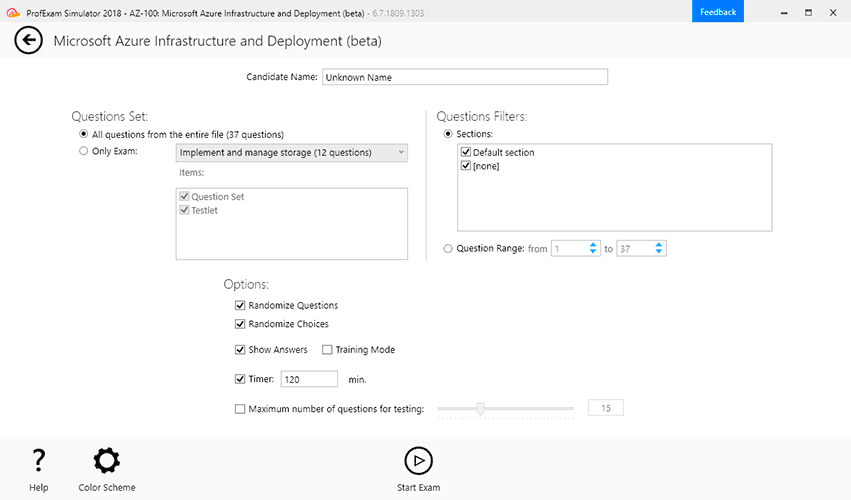File Info
| Exam | AWS Certified Security Specialty |
| Number | AWS-Certified-Security-Specialty |
| File Name | Amazon.AWS-Certified-Security-Specialty.ExamCollection.2024-08-25.139q.tqb |
| Size | 2 MB |
| Posted | Aug 25, 2024 |
| Download | Amazon.AWS-Certified-Security-Specialty.ExamCollection.2024-08-25.139q.tqb |
How to open VCEX & EXAM Files?
Files with VCEX & EXAM extensions can be opened by ProfExam Simulator.
Coupon: MASTEREXAM
With discount: 20%






Demo Questions
Question 1
The Security team believes that a former employee may have gained unauthorized access to AWS resources sometime in the past 3 months by using an identified access key.
What approach would enable the Security team to find out what the former employee may have done within AWS?
- Use the AWS CloudTrail console to search for user activity.
- Use the Amazon CloudWatch Logs console to filter CloudTrail data by user.
- Use AWS Config to see what actions were taken by the user.
- Use Amazon Athena to query CloudTrail logs stored in Amazon S3.
Correct answer: A
Question 2
The Security Engineer implemented a new vault lock policy for 10TB of data and called initiate-vault-lock 12 hours ago. The Audit team identified a typo that is allowing incorrect access to the vault.
What is the MOST cost-effective way to correct this?
- Call the abort-vault-lock operation, fix the typo, and call the initiate-vault-lock again.
- Copy the vault data to Amazon S3, delete the vault, and create a new vault with the data.
- Update the policy, keeping the vault lock in place.
- Update the policy and call initiate-vault-lock again to apply the new policy.
Correct answer: A
Question 3
A company wants to control access to its AWS resources by using identities and groups that are defined in its existing Microsoft Active Directory.
What must the company create in its AWS account to map permissions for AWS services to Active Directory user attributes?
- AWS IAM groups
- AWS IAM users
- AWS IAM roles
- AWS IAM access keys
Correct answer: C
Explanation:
Reference: https://aws.amazon.com/blogs/security/how-to-connect-your-on-premises-active-directory-to-aws-using-ad-connector/ Reference: https://aws.amazon.com/blogs/security/how-to-connect-your-on-premises-active-directory-to-aws-using-ad-connector/
Question 4
A company has contracted with a third party to audit several AWS accounts. To enable the audit, cross-account IAM roles have been created in each account targeted for audit. The Auditor is having trouble accessing some of the accounts.
Which of the following may be causing this problem? (Choose three.)
- The external ID used by the Auditor is missing or incorrect.
- The Auditor is using the incorrect password.
- The Auditor has not been granted sts:AssumeRole for the role in the destination account.
- The Amazon EC2 role used by the Auditor must be set to the destination account role.
- The secret key used by the Auditor is missing or incorrect.
- The role ARN used by the Auditor is missing or incorrect.
Correct answer: CEF
Question 5
Compliance requirements state that all communications between company on-premises hosts and EC2 instances be encrypted in transit. Hosts use custom proprietary protocols for their communication, and EC2 instances need to be fronted by a load balancer for increased availability.
Which of the following solutions will meet these requirements?
- Offload SSL termination onto an SSL listener on a Classic Load Balancer, and use a TCP connectionbetween the load balancer and the EC2 instances.
- Route all traffic through a TCP listener on a Classic Load Balancer, and terminate the TLS connection onthe EC2 instances.
- Create an HTTPS listener using an Application Load Balancer, and route all of the communication throughthat load balancer.
- Offload SSL termination onto an SSL listener using an Application Load Balancer, and re-spawn and SSLconnection between the load balancer and the EC2 instances.
Correct answer: C
Question 6
An application is currently secured using network access control lists and security groups. Web servers are located in public subnets behind an Application Load Balancer (ALB); application servers are located in private subnets.
How can edge security be enhanced to safeguard the Amazon EC2 instances against attack? (Choose two.)
- Configure the application's EC2 instances to use NAT gateways for all inbound traffic.
- Move the web servers to private subnets without public IP addresses.
- Configure AWS WAF to provide DDoS attack protection for the ALB.
- Require all inbound network traffic to route through a bastion host in the private subnet.
- Require all inbound and outbound network traffic to route through an AWS Direct Connect connection.
Correct answer: BC
Question 7
A Security Administrator is restricting the capabilities of company root user accounts. The company uses AWS Organizations and has enabled it for all feature sets, including consolidated billing. The top-level account is used for billing and administrative purposes, not for operational AWS resource purposes.
How can the Administrator restrict usage of member root user accounts across the organization?
- Disable the use of the root user account at the organizational root. Enable multi-factor authentication of theroot user account for each organizational member account.
- Configure IAM user policies to restrict root account capabilities for each Organizations member account.
- Create an organizational unit (OU) in Organizations with a service control policy that controls usage of theroot user. Add all operational accounts to the new OU.
- Configure AWS CloudTrail to integrate with Amazon CloudWatch Logs and then create a metric filter forRootAccountUsage.
Correct answer: C
Explanation:
Reference:https://docs.aws.amazon.com/organizations/latest/userguide/orgs_manage_policies_about-scps.html Reference:
https://docs.aws.amazon.com/organizations/latest/userguide/orgs_manage_policies_about-scps.html
Question 8
A Systems Engineer has been tasked with configuring outbound mail through Simple Email Service (SES) and requires compliance with current TLS standards.
The mail application should be configured to connect to which of the following endpoints and corresponding ports?
- email.us-east-1.amazonaws.com over port 8080
- email-pop3.us-east-1.amazonaws.com over port 995
- email-smtp.us-east-1.amazonaws.com over port 587
- email-imap.us-east-1.amazonaws.com over port 993
Correct answer: C
Explanation:
Reference: https://docs.aws.amazon.com/ses/latest/DeveloperGuide/smtp-connect.html Reference: https://docs.aws.amazon.com/ses/latest/DeveloperGuide/smtp-connect.html
Question 9
A threat assessment has identified a risk whereby an internal employee could exfiltrate sensitive data from production host running inside AWS (Account 1). The threat was documented as follows:
Threat description: A malicious actor could upload sensitive data from Server X by configuring credentials for an AWS account (Account 2) they control and uploading data to an Amazon S3 bucket within their control.
Server X has outbound internet access configured via a proxy server. Legitimate access to S3 is required so that the application can upload encrypted files to an S3 bucket. Server X is currently using an IAM instance role.
The proxy server is not able to inspect any of the server communication due to TLS encryption.
Which of the following options will mitigate the threat? (Choose two.)
- Bypass the proxy and use an S3 VPC endpoint with a policy that whitelists only certain S3 buckets withinAccount 1.
- Block outbound access to public S3 endpoints on the proxy server.
- Configure Network ACLs on Server X to deny access to S3 endpoints.
- Modify the S3 bucket policy for the legitimate bucket to allow access only from the public IP addressesassociated with the application server.
- Remove the IAM instance role from the application server and save API access keys in a trusted andencrypted application config file.
Correct answer: AC
Question 10
A company will store sensitive documents in three Amazon S3 buckets based on a data classification scheme of "Sensitive," "Confidential," and "Restricted." The security solution must meet all of the following requirements:
- Each object must be encrypted using a unique key.
- Items that are stored in the "Restricted" bucket require two-factor authentication for decryption.
- AWS KMS must automatically rotate encryption keys annually.
Which of the following meets these requirements?
- Create a Customer Master Key (CMK) for each data classification type, and enable the rotation of itannually. For the "Restricted" CMK, define the MFA policy within the key policy. Use S3 SSE-KMS to encrypt the objects.
- Create a CMK grant for each data classification type with EnableKeyRotation and MultiFactorAuthPresentset to true. S3 can then use the grants to encrypt each object with a unique CMK.
- Create a CMK for each data classification type, and within the CMK policy, enable rotation of it annually, anddefine the MFA policy. S3 can then create DEK grants to uniquely encrypt each object within the S3 bucket.
- Create a CMK with unique imported key material for each data classification type, and rotate them annually.For the "Restricted" key material, define the MFA policy in the key policy. Use S3 SSE-KMS to encrypt the objects.
Correct answer: A

